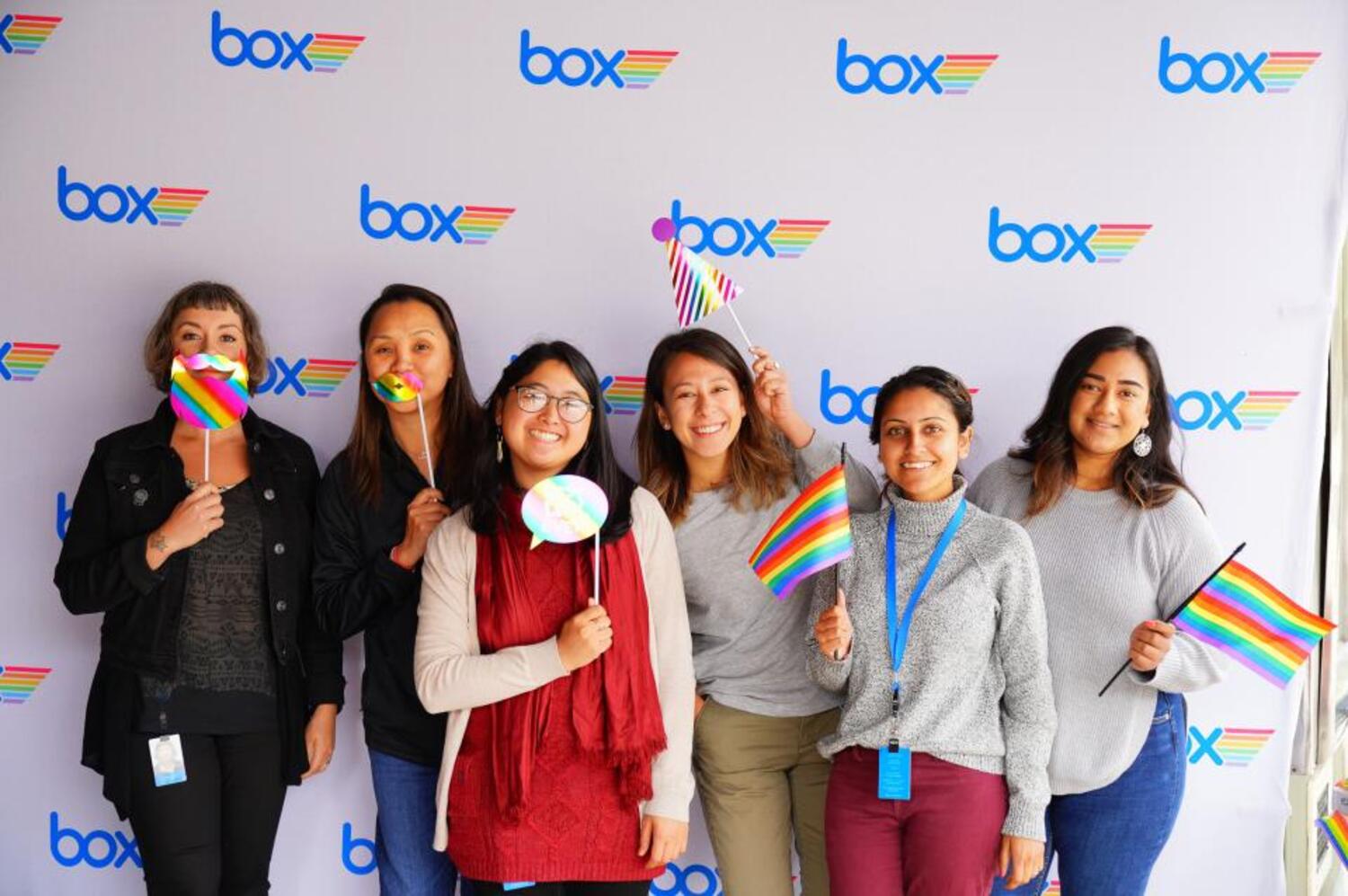Benchmarks & Trends, Diversity & Inclusion, Employee Experience
What workplace culture leaders should prioritize this year if they want to create and maintain a culture that will retain and attract employees.
Your workplace culture priorities will determine whether your company thrives or falls behind.
An economic downturn will force businesses and their leaders to make tough choices. Will companies decide they can no longer afford to be a great workplace?
“This is exactly the wrong time to step back,” says Sarah Lewis-Kulin, vice president of global recognition at Great Place To Work®. Market research shows that companies that prioritize the experience of their workers in a recession not only thrive in the short-term, but also see sustained value growth in the years following a crisis.
Where should leaders focus their attention in the year ahead? Experts from Great Place To Work have insights gleaned from more than 30 years of research into what makes a great workplace culture — and why companies that invest in employees do so well.
Here are five workplace culture priorities you should focus on this year, no matter what kind of organization you work for:
1. Build trust with employees by showing extraordinary care.
The economic pressures of this prediction are leading some companies to reassess how they support and invest in their people.
However, it’s the companies who continue to put employees first that will find the most success.
“Company behavior this year will determine how quickly companies bounce back from these recessionary times,” says Kim Peters, executive vice president of global recognition and strategic partnerships at Great Place To Work. “If you don’t have a high-trust culture now, it’s definitely time to build one with careful thoughtful decisions that show your care for your people.”
Ping-pong tables might not be recession-proof; great workplace culture is.
Rather than pulling back, leaders must seize opportunities to demonstrate care for workers.
“2023 will be a test of the resilience of care,” says Matt Bush, principal strategic advisor with Great Place To Work. As companies pull back on remote work, flexibility, and more in the face of economic pressure, those who double down on the worker experience will come out ahead.
Examples of how employees say their organizations show care include:
- Investment in well-being
- Commitment to diversity, equity, inclusion & belonging (DEIB)
- Dedication to local communities
2. Invest in talent development and performance management.
Even if there is a severe recession this year, it will be different from the downturn of 2008. Even as many businesses have conducted layoffs, employee expectations and the overall labor market remain buoyant.
“In 2008, people were desperate for jobs,” says Lewis-Kulin, “but that’s not the case right now.” Job opportunities outnumbered applicants by a healthy margin in 2022 and though we might not still be talking about the “Great Resignation,” employees still feel they have leverage.
“Employees still see themselves as very valuable commodities — as they should,” she says. “Their innovation, agility, and hard work will be what helps organizations thrive.”
That creates a wrinkle for business leaders and people managers in 2023. In a survey from Protiviti of 1,300 C-suite executives, keeping and finding talent was rated as the biggest organizational risk facing companies in 2023, and for the next decade, too. The data proves companies must heavily invest in talent development and training, as well as recruitment.
Yet, developing talent is complicated when workers feel they have plenty of options. Will they respond well to constructive criticism? Will workers you’ve invested in take their talents to the competition? “Quiet quitting” and “career cushioning” became buzzwords in 2022. They’re still crucial concerns.
Companies that can engage and develop talent are the ones that will see continued success in the months ahead. It’s a reminder that workplace culture has more to do with meaningful relationships with leaders and colleagues, and opportunities for personal growth, than it does with perks and trendy benefits.
Ping-pong tables might not be recession-proof; great workplace culture is.
3. Prepare for DEIB progress to be tested.
Recession fears have already led many companies to conduct layoffs, institute hiring freezes, and reassess talent management. While these choices might make financial sense, they will have real impacts on diversity, equity, inclusion & belonging (DEIB).
This is especially true if your representation strategy hinges on adding people from outside your organization, warns Holly Petroff, executive vice president of global strategic accounts for Great Place To Work. “How might your approaches and tactics need to shift to take into account the current climate's impact?”
As an example, many organizations are pulling back on remote work, and that has an impact on DEIB progress.
These added obstacles will likely affect your dedicated DEIB staff, Petroff adds. “Many employees, especially those in employee resource groups (ERGs) and in DEIB roles, report feeling frustrated by what feels like a disconnect between the importance they hear their leaders placing on DEIB and the experience they are having at work every day,” she says.
However, Petroff doesn’t see the best organizations backing away from DEIB priorities. The best leaders will prepare not only to meet goals set by the board of directors, but also help expand board members thinking on these topics.
“Company behavior this year will determine how quickly companies bounce back from these recessionary times,” says Kim Peters, executive vice president of global recognition and strategic partnerships at Great Place To Work.
4. Great workplaces must be great both in-person and online.
Hybrid and remote work, made mainstream during the COVID-19 pandemic, is here to stay. That means employers must continue to investigate how to make hybrid work actually work in a market that will demand high performance and productivity.
Asking workers to come back to an office isn’t out of the question, explains Tony Bond, chief diversity and innovation officer with Great Place To Work. It just requires thoughtfulness and compassion.
“As leaders plan their return-to-office strategies, we must sit with the question: ‘What are we returning to?’” Bond says. “Businesses and people are different from what they were prior to the pandemic.”
“Quiet quitting” and “career cushioning” became buzzwords in 2022. They’re still crucial concerns in 2023.
This next year will require leaders to create excellent employee experiences that satisfy a complex and nuanced set of individual needs. “Part of an organization’s transformation agenda will be deciding how to create a great experience in both the virtual and physical world,” Bond says.
Questions leaders must ask include:
- How can managers bridge virtual and in-person experiences and maintain a sense of connection and belonging?
- What is the currency that adds value to attract employees back to the physical world?
- Do I truly understand the needs of employees that make hybrid work so attractive?
- How will I manage the trade-offs between employee desires and the business goals?
- What didn’t work in the old physical world that was normalized?
5. Political polarization poses an ongoing threat to company culture.
More and more companies are talking about their support for environmental goals and attempts to improve their communities.
ESG also got some push back in 2022. Some states have passed laws to limit the use of ESG criteria in state government investment portfolios.
The takeaway for HR leaders should be the impact these disagreements have on camaraderie and connection between co-workers.
“We have a presidential election coming up,” says Lewis-Kulin. “Employers should be working on building meaningful connections between fellow employees as well as helping employees connect to the organization's purpose and goals. Friction between colleagues could really increase.”
The political polarization that divides the U.S. is unlikely to disappear in the next year. Added economic pressure might even have some leaders backtracking on bold promises on ESG goals made from the comfort of a bigger profit margin.
Leaders will want to take fewer risks, says Lewis-Kulin, but it’s not necessarily safer to stay quiet about important issues that matter for your stakeholders. “Not saying anything as the world gets more polarized is also not a safe stance.”
Leaders must be crystal clear about who their stakeholders are and the values they hold for the organization. It will be tempting to not stand up for company values in the name of maximizing the bottom line, but the best organizations are always those that do both.
Employees are looking for meaningful work — a top retention driver at all of the best workplaces. Companies that fail to stand up for their values risk losing the trust of their employees and missing out on the benefits of being a great workplace.
Subscribe
Learn how to create an award-winning company culture. Subscribe to the Great Place To Work company culture newsletter and join 100,000+ other leaders learning how to create a great workplace.











